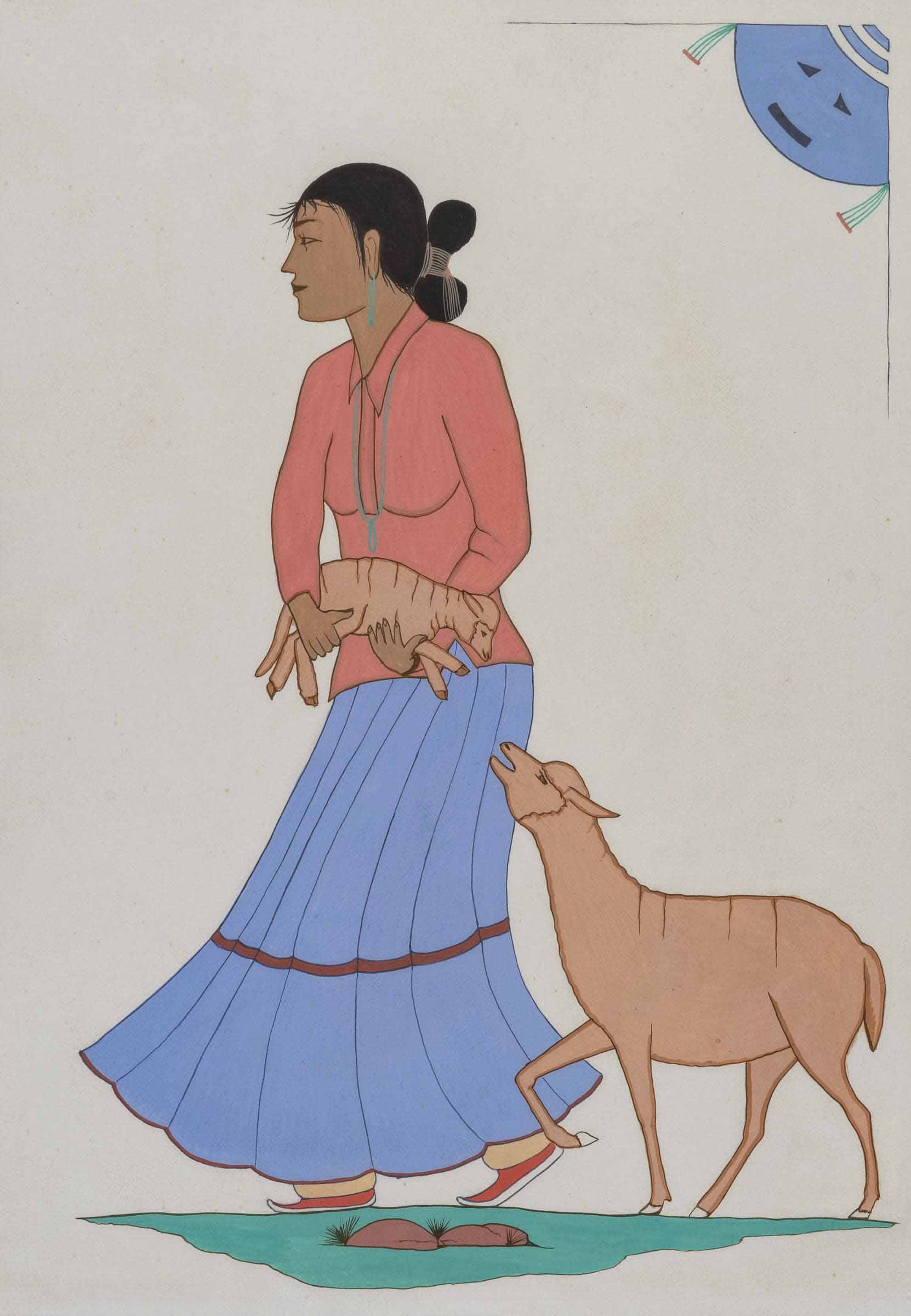Home » Special Exhibits » The Art and Artists of “The Indian New Deal” » Signifying Daily Life
The Art and Artists of “The Indian New Deal”
Signifying Daily Life
One way Native artists exercised agency within the Studio Style (see previous section for an explanation of the Studio Style) was through choice of subject matter, and specifically, the choice to portray culture as everyday life.

Click to view artist Eric-Paul Riege’s Creative Pairing.
At First Glance
Based only on what you see, do you think these paintings are by the same artist?
Looking Closer
Style
Comparing these two artworks highlights the ways in which the Studio Style negates Native artists’ individuality. Timothy Begay is a relatively obscure artist, and Navajo Girl with Lamb was an enigma in Gallup’s New Deal art collection until recently. The painting has no visible signature and for several decades was attributed in record-keeping and publications to Harrison Begay. Appraisal reports show that at some point in the late 1990s, however, attribution was changed to Timothy Begay. While the uniformity of the Studio Style preempts a conclusive determination of authorship, current scholarship upholds the theory the work is by Timothy Begay.
Seeing Past
CONTEXT
Because the uniformity of the Studio Style undercuts authorship, it also undercuts the artist’s voice by applying a stylized veneer to culturally important subject matter and relegating what could be meaningful depictions to a superficial realm. These two paintings are prime examples of how the Studio Style flattens an artwork’s meaning in addition to its aesthetic.
Read More
The mid-1930s, when these paintings were made, was the time of the Navajo Livestock Reduction, when the federal government slaughtered hundreds of thousands of the Navajo people’s sheep and goats (about half of the herd) to prevent soil erosion caused by overgrazing. Navajos believe that sheep are gifts from the holy people, and they are an integral part of the Navajo lifestyle. The spiritual and cultural value of sheep was heightened in light of the government’s actions, yet these paintings seem, at least on their faces, removed from this context.
The Livestock Reduction meant that many families lost their means of wool production and were unable to carry on and pass down the practice and custom of weaving. That Harrison Begay chose to document the conclusion of the weaving process in Taking Down a Finished Rug recognizes that reality. Yet the painting’s power as a statement on the loss of tradition inflicted by the Navajo Livestock Reduction is overwhelmed by its emphasis on the design qualities of the weaving he depicts.
Likewise, in Navajo Girl with Lamb, Timothy Begay chooses to depict a ewe and a lamb alongside references to sky and earth, alluding to the cycle of the seasons and the natural order. Still, the painting reads as a nondescript pastoral scene rather than a rebuke of the unnatural disruption and devastation imposed by the Livestock Reduction program.
Both paintings also call attention to ways the program adversely affected Navajo women in particular, eliminating their wealth and means of economic independence. Yet the Studio Style does not make space for the subject’s deeper significance.




